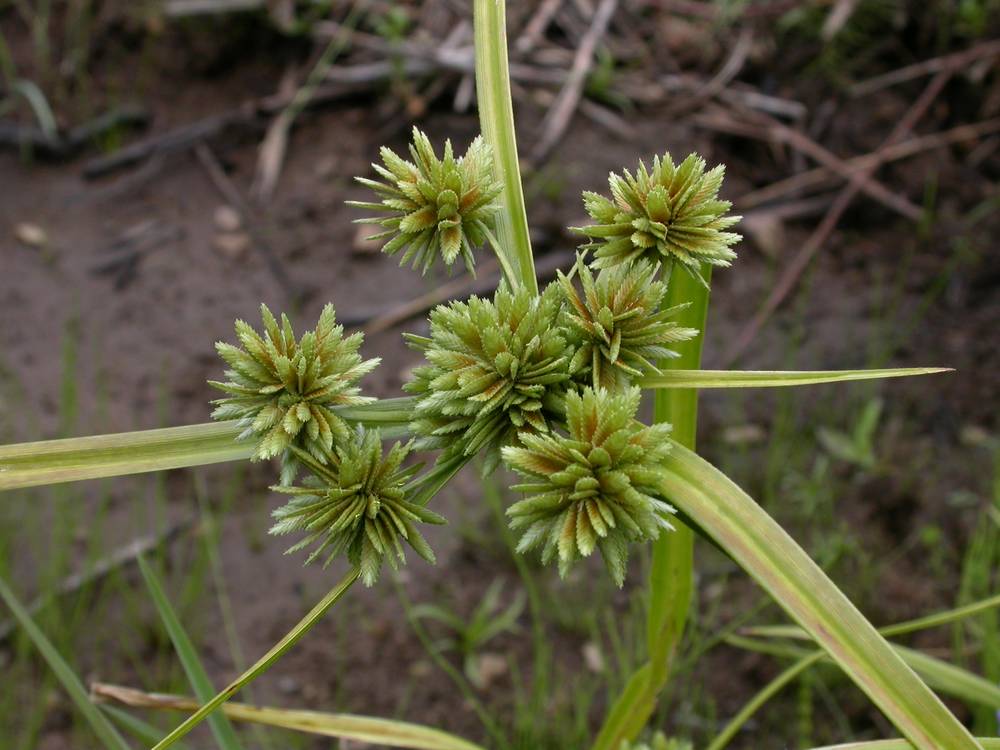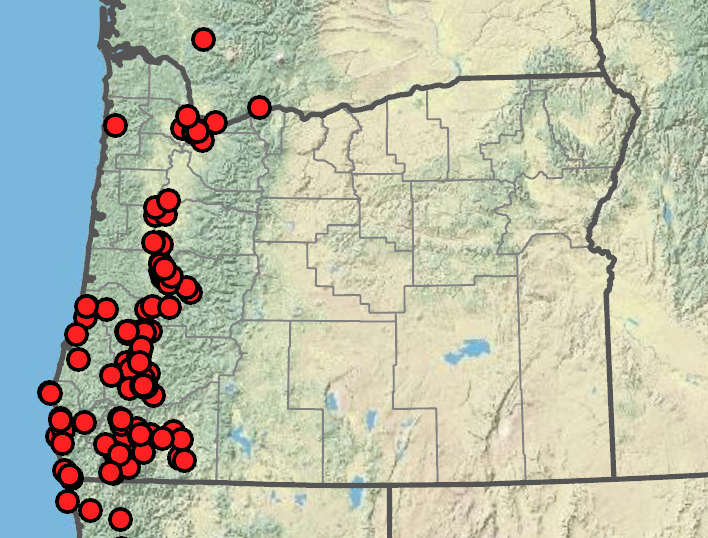Cyperus hermaphroditus
Cyperus eragrostis
tall flatsedge
trigonous to terete; (25)40–60(90) cm.
(10)25–50 cm × 5–8(12) mm.
clusters head-like, globose; (10)20–40 mm diameter;
rays (0)3–10, 2.5– 5(12) cm;
inflorescence bracts 4–8; horizontal to ascending at 15–30°, 3–30(50) cm × 1.5–8(12) mm.
(20)30–50(70), oblong, compressed, 5–20 × 2.2–3 mm; floral scales (12)20–30(50); ovate-deltate, 2–2.3 × 1–1.4 mm; off-white to golden brown, basally 2-keeled;
lateral ribs 0, declined 30–40° from rachilla.
anthers 1–1.2 mm;
styles 1–1.2 mm;
stigmas 0.5 mm.
broadly ellipsoid, 1.2–1.4 × 0.5–0.6 mm;
stipe to 0.1 mm;
beak 0.2–0.3 mm.
Cyperus hermaphroditus
Cyperus eragrostis
Disturbed wetlands, roadside ditches. 0–800 m. Casc, CR, Est, Sisk, WV. CA, WA; north to British Columbia, eastern US; South America; Europe. Native?
Cyperus eragrostis is a southern species that has been spreading northwards. Southwestern Oregon populations may be native. Further research is warranted.
Barbara Wilson, Richard Brainerd, Nick Otting
- Local floras:
BC,
CA,
OR,
WA
- Local Web sites:
CalFlora,
CalPhotos,
Flora NW,
PNW Herbaria
WildflowerSearch
iNaturalist (observations)
USDA Plants Database
- LBJ Wildflower Center
- SEINet
- Plants of the World Online
- Encyclopedia of Life
- Wikipedia
- Google Image Search



